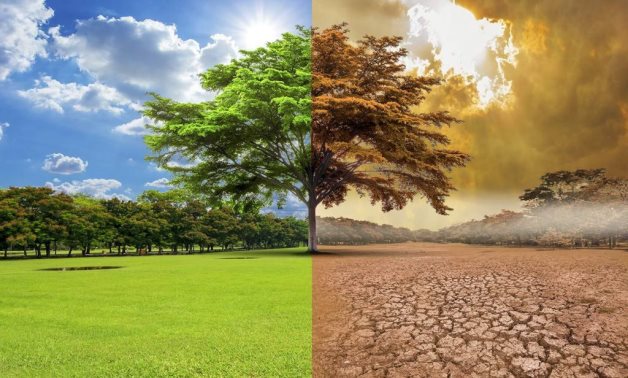There are many theories about climate change, including the impact of greenhouse gases and global warming, according to CAIRO – 8 November 2022.
The meaning and importance of climate change are not clear to many, but the following theories reflect the efforts of scientists over the years to explain the phenomenon.
the impact of the greenhouse
The French mathematician and physicist Joseph Fourier proposed in the 1820s that hot surfaces emit radiation, which requires that the energy that enters the planet as sunlight be balanced with energy returning to space.
Fourier thought that some of this energy should remain on Earth and not travel back into space, keeping the planet warm.
According to Fourier, the atmosphere—the thin layer of air that covers the Earth—functions much like a greenhouse.
Glass walls allow energy to enter, but it is then trapped inside, much like a warm greenhouse.
In the 1850s, Eunice Newton Foote’s research expanded on this hypothesis. Foote’s experiments with glass cylinders revealed that the sun’s heating effect was greater in moist air than in dry air and that the cylinder containing carbon dioxide experienced the highest heating.
Her research anticipated that of Irish scientist John Tyndall, who also concentrated on the types of gases that were most important in heat absorption.
Due to the fact that the released infrared radiation is not entirely trapped in the Earth’s atmosphere but is instead absorbed, experts have since realised that the term “global warming” was oversimplified. The more greenhouse gases, the more energy is stored within the Earth’s atmosphere.
Treiber gases
The research of Irish scientist John Tyndall focused on the gases that are most likely to contribute to the absorption of sunlight.
Laboratory tests by Tyndall in the 1860s showed that coal gas (which contains carbon dioxide, methane, and volatile hydrocarbons) was particularly effective at absorbing energy.
He eventually demonstrated that carbon dioxide alone can absorb light from a variety of wavelengths, acting like a sponge.
Svante Arrhenius, a Swedish chemist, started wondering in 1895 how lower atmospheric concentrations of carbon dioxide might be able to cool the Earth.
Arrhenius questioned whether decreased volcanic activity might lower global carbon dioxide levels in an effort to explain previous ice ages. His calculations revealed that if carbon dioxide levels were halved, global temperatures could drop by about 5 degrees Celsius.
After that, Arrhenius reexamined his earlier calculations to determine what would happen if carbon dioxide levels doubled and questioned whether the reverse was also true. The likelihood seemed remote at the time, but his findings showed that the increase in global temperatures, which would be 5 degrees Celsius or 9 degrees Fahrenheit, would be the same.
Decades later, recent climate modeling confirmed that Arrhenius’ numbers were not far from reality..
Climate change theories: Discover how scientists are attempting to explain the phenomenon

